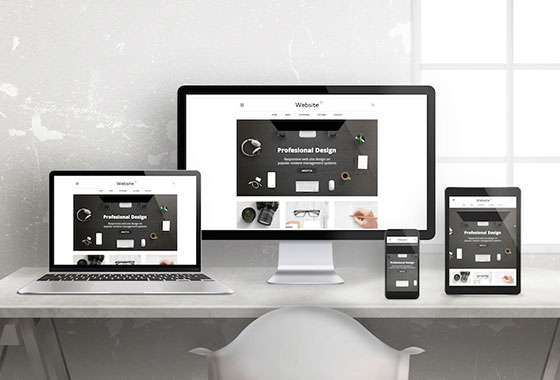Establishing your online presence as a business is important, and this starts with your website. One of the most basic elements of your online identity, your website can literally make or break your business. A well-developed website will result in increased leads, conversions, and revenues.
1. Site Navigation
A website that is easy to navigate is essential. This includes a navigation bar or menu of pages, clearly labeled. Very basic pages may include Home, About, Services, Testimonials, Contact pages. For larger sites that include multiple pages, it’s important to have drop-down menus clearly visible for ease of site navigation. If you have an ecommerce site, navigation is absolutely important for sales. Basically, you need to show your visitor who, what, when, where, and why in a short amount of time. Visitors spend an average of 2 minutes on a site, and that number is decreasing every year.
2. Messaging & Layout
Web pages with too much content and visuals look messy, while websites with a good balance of content and images are more appealing. Users will remember the message when it is clear and concise. Streamlined, branded messaging is crucial. If it’s too hard to understand or too difficult to find, you will lose your site visitor and your potential prospect. Fonts and typographic details should be branded with your logo. This sets the stage for your print collateral as well.
3. Brand Consistency
Your brand is what sets you apart from your competitors, and it needs to be consistent across all online and print platforms. Your visual brand starts with your logo, which is then carried over to your website and print collateral. All elements should be consistent including fonts, typography, colors, headers, images, etc. Inconsistencies look unprofessional and result in lost leads.
4. Conversions
In most cases, the purpose of a website is to get a visitor to take action, whether calling, filling out a form, purchasing a product, and finding out more about your company while you have their limited attention. Having your phone number and email prominently placed is essential and yes, even in this day and age, often overlooked. If you’re running any Publicity or paid Marketing or Advertising campaigns such as email marketing, search engine marketing, pay per click campaigns, it’s even more important to have a clear call to action on your website and optimized landing pages where applicable. Whether it’s a free offer, downloadable eBook, free sample, or a newsletter join, it needs to be prominent and easy to click.
5. Search Engine Optimization (SEO)
On-Page SEO involves optimizing internal elements of your website pages to make them more search engine friendly. On-Page SEO helps search engines gauge if your content is relevant to people seeking information about anything online using a set of keywords. On-Page SEO includes both the content and HTML source code of a page that can be optimized, as opposed to Off-page SEO which refers to links and other external signals. On-Page SEO has changed considerably over the years, so it’s important that your marketing team knows the latest and greatest to help you with ultimate site optimization.
If you think you may need some help with your website or have questions, contact us at Elev8 Consulting Group and check out our sample portfolio! We have a lot of fun building, designing and managing websites.




